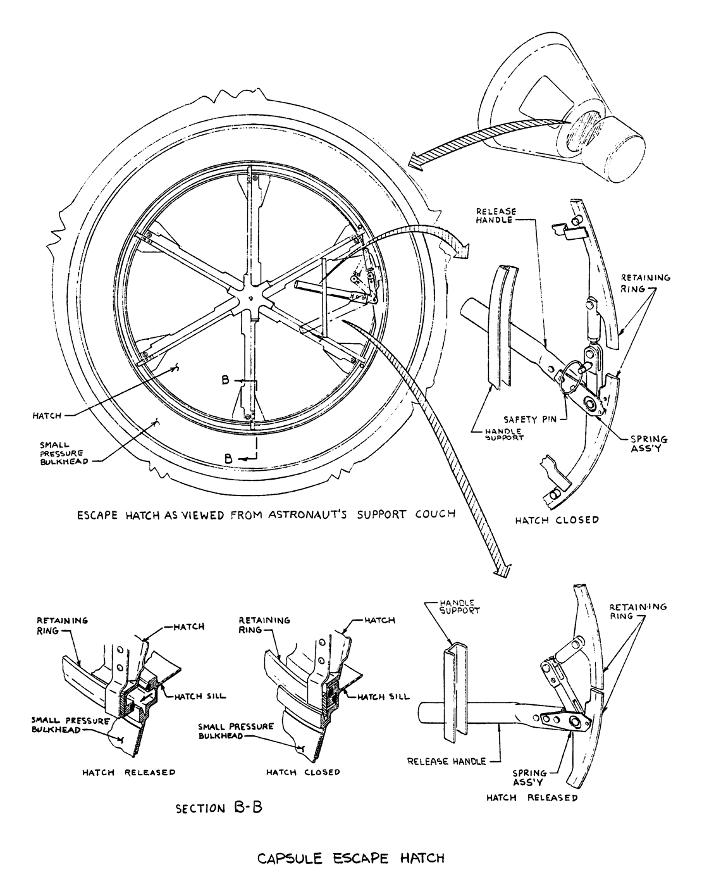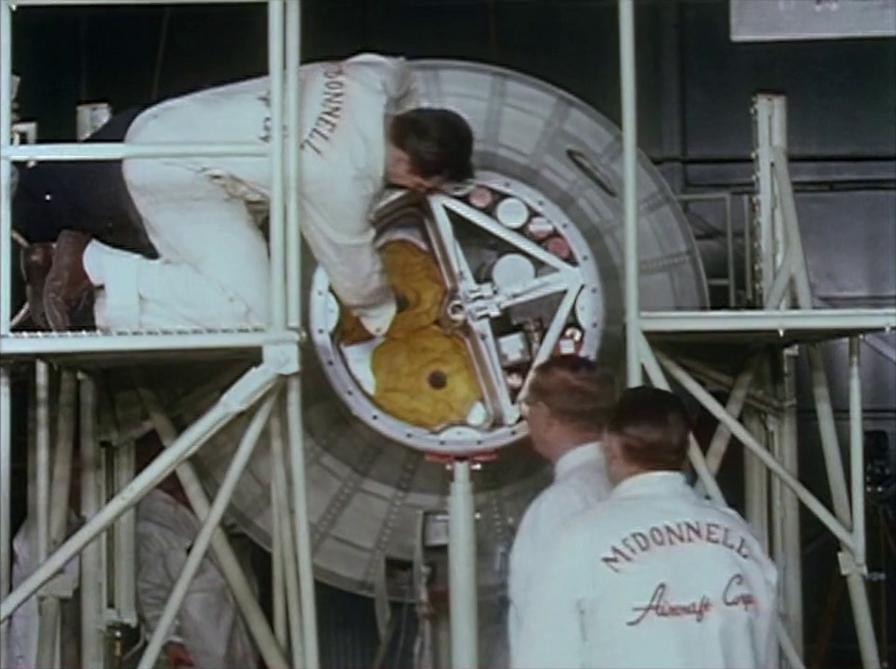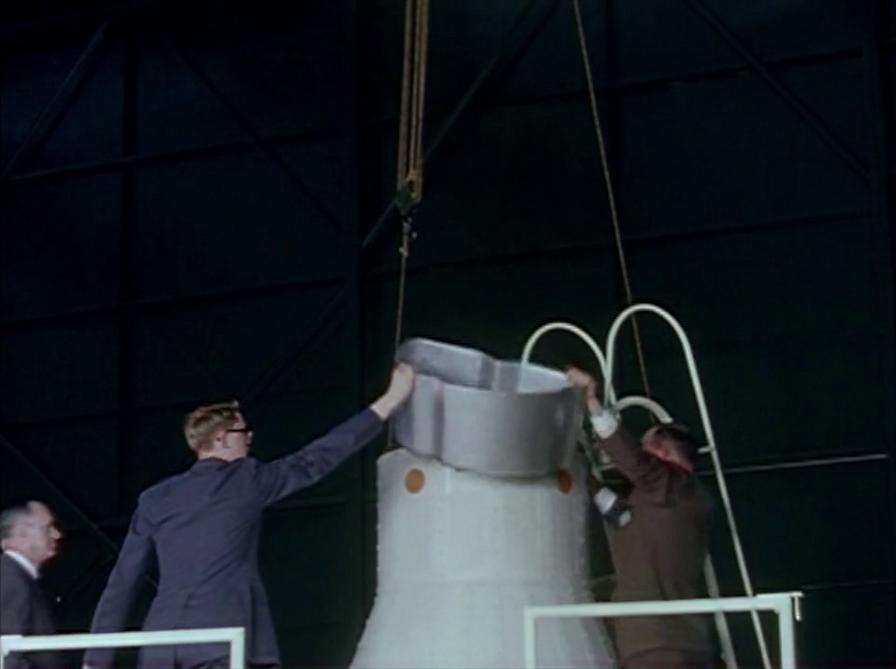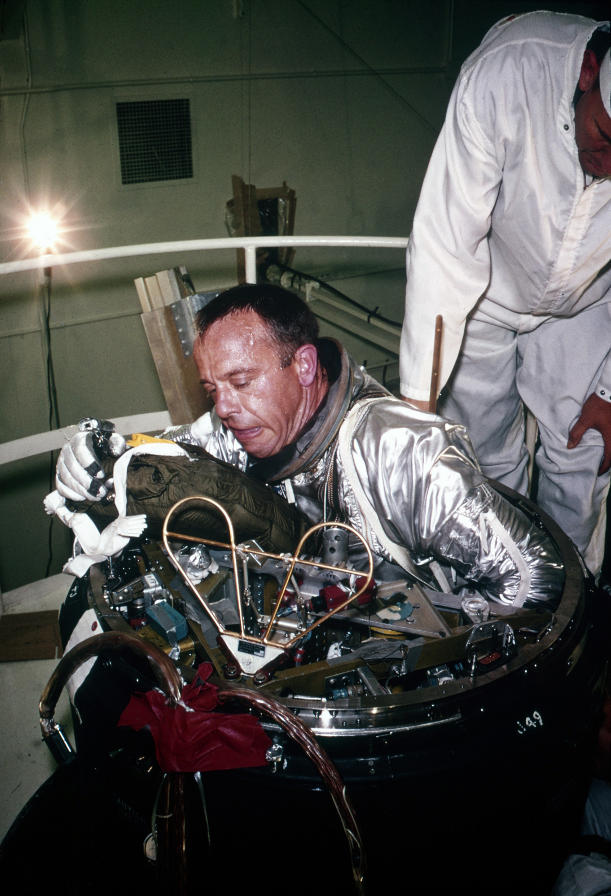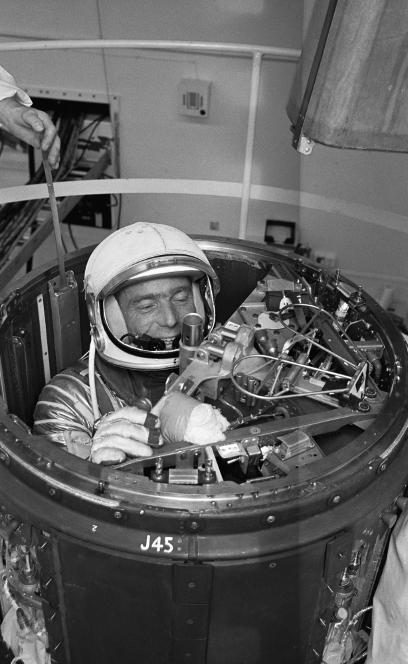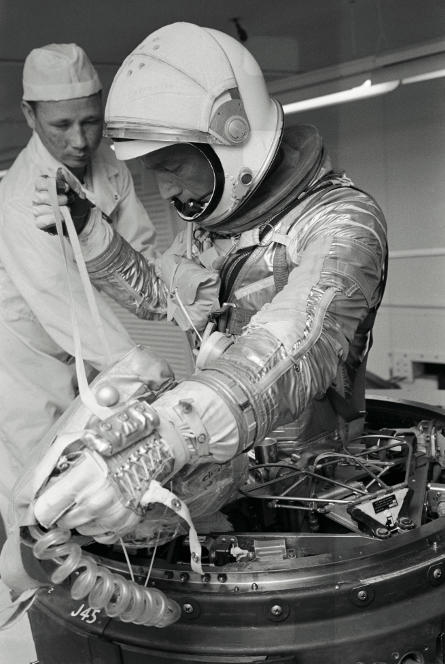Mercury Spacecraft Escape Hatch
In addition to the familiar side hatch, the Mercury spacecraft had another hatch, on the forward pressure bulkhead. This was referred to as the "escape hatch".
Click image for a 2220x2832 pixel version of this image in a new window.
From page 2-12 (p. 50 in the PDF) of the Project Mercury
Familiarization Manual (SEDR 104) (alternate
link).
Extraction and cleanup by heroicrelics.
The Project Mercury Familiarization Manual (SEDR 104) describes the hatch as follows:
The small pressure bulkhead internally separates the cabin pressurized area from the recovery system compartment and structurally supports the aft conical section. A sealed escape hatch, internally actuated, is provided in the small pressure bulkhead to enable the Astronaut's exit following capsule landing. The dish-shaped escape hatch is constructed of a beaded aluminum skin spotwelded to an inner skin, that is reinforced with structural "Z" shaped members. The hatch outer flanged edge fits into the small pressure bulkhead sill and is held in place with a retaining ring. Expanding the retainer ring by raising the hatch handle, wedges the retainer ring between the bulkhead sill and the hatch flanged edge and forces the hatch flange aft to provide a sealing action.
Egress via this hatch required removing part of the instrument panel inside the spacecraft as well as removing a parachute canister in the spacecraft's recovery compartment.
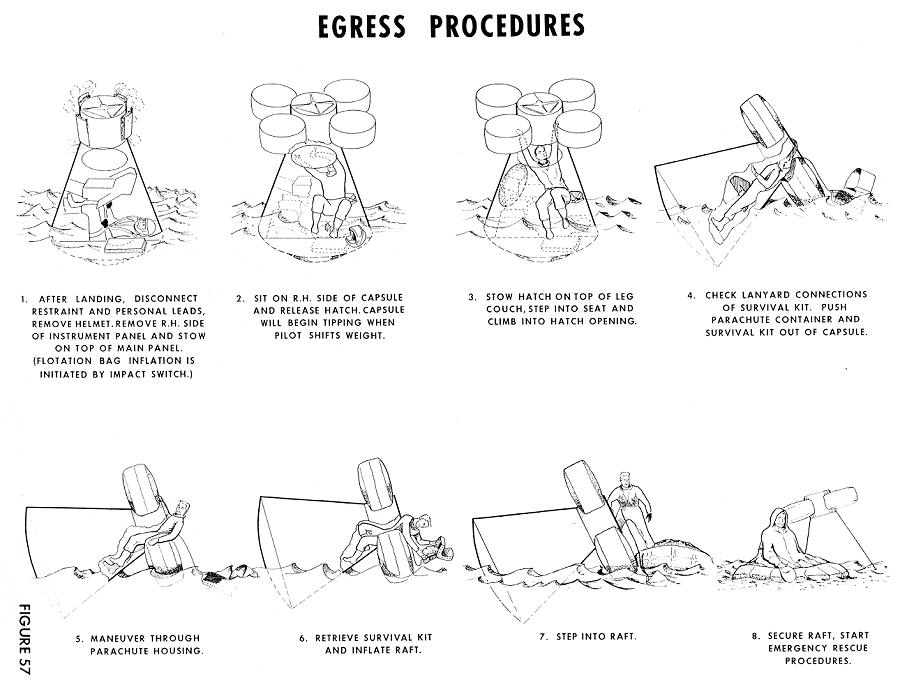
From NASA's Project Mercury Drawings and Technical Diagrams page.
Major steps in the egress procedure noted on the diagram include
- After landing, disconnect restraint and personal leads, remove helmet, remove R.H. side of instrument panel and stow on top of main panel. (Flotation bag inflation is initiated by impact switch.)
- Sit on R.H. side of capsule and release hatch. Capsule will begin tipping when pilot shifts weight.
- Stow hatch on top of leg couch, step into seat, and climb into hatch opening.
- Check lanyard connections of survival kit. Push parachute container and survival kit out of capsule.
- Maneuver through parachute housing.
- Retrieve survival kit and inflate raft.
- Step into raft.
- Secure raft. Start emergency rescue procedures.
This diagram is from a fairly early Project Mercury document, Project Mercury Indoctrination, dated May 1959. I had not previously seen any reference to such flotation bags for the Mercury spacecraft. The only reference I could find to them was an October 1960 study noting that the deletion of the flotation bags compromised the spacecraft's stability in water.
McDonnell Aircraft Corporation performed egress testing as part of the spacecraft development process.
McDonnell technicians inspect the parachute canister prior to egress
testing.
Click image for a 964x720 pixel version of this image in a new window.
Still from Mercury Out The Top
Egress.
Extraction and cleanup by heroicrelics.
McDonnell technicians remove the parachute canister prior to egress
testing.
Click image for a 964x720 pixel version of this image in a new window.
Still from Mercury Out The Top
Egress.
Extraction and cleanup by heroicrelics.
McDonnell technicians perform egress testing.
Click image for a 964x720 pixel version of this image in a new window.
Still from Mercury Out The Top
Egress.
Extraction and cleanup by heroicrelics.
The diagram above matter-of-factly instructs the astronaut to "maneuver through parachute housing," as if it were a simple task (or as if removing and stowing the instrument panel or forward bulkhead hatch within the confines of the Mercury spacecraft was a simple matter; pad leader Guenter Wendt famously noted in regard to the Mercury spacecraft that "You get in with a shoehorn and get out with a can opener!").
I wonder if astronaut Alan Shepard might agree that maneuvering out of the parachute housing is such a simple matter:
Alan Shepard squeezes through the opening at the top of a Mercury capsule
during training as Gordon Cooper's backup on MA-9 in 1963.
Click image for a 2166x3174 pixel version of this image in a new window.
Photo courtesy Ed
Hengeveld.
Caption courtesy collectSPACE.
The forward egress hatch was used operationally only once during Project Mercury, on Scott Carpenter's Aurora 7 flight. Problems during the retro burn caused a 250-mile overshoot. The first planes spotted him about 36 minutes after splashdown but frogmen didn't arrive until about an hour after he hit the water. While waiting for recovery forces, the temperature inside the cabin reached 101°, so Carpenter decided to exit the spacecraft. Out of fear of taking on water, he decided to not blow the main hatch but rather exit via the forward hatch.
In these training photos, Carpenter seems to be having an easier time of the egress than Shepard above, and probably a less-sweaty time than he had during his actual mission:
Astronaut M. Scott Carpenter practices top egress from neck of the
spacecraft prior to the launch of the Mercury-Atlas 7 (MA-7)
spaceflight.
NASA photo S62-01381. Click image to open its page at the NASA Human
Spaceflight Image Gallery in a new window.
Project Mercury astronaut M. Scott Carpenter, prime pilot of the
Mercury-Atlas 7 (the nation's second manned orbital flight), completes top
egress training in the white room at Cape Canaveral, Florida.
NASA photo S62-01383. Click image to open its page at the NASA Human
Spaceflight Image Gallery in a new window.

